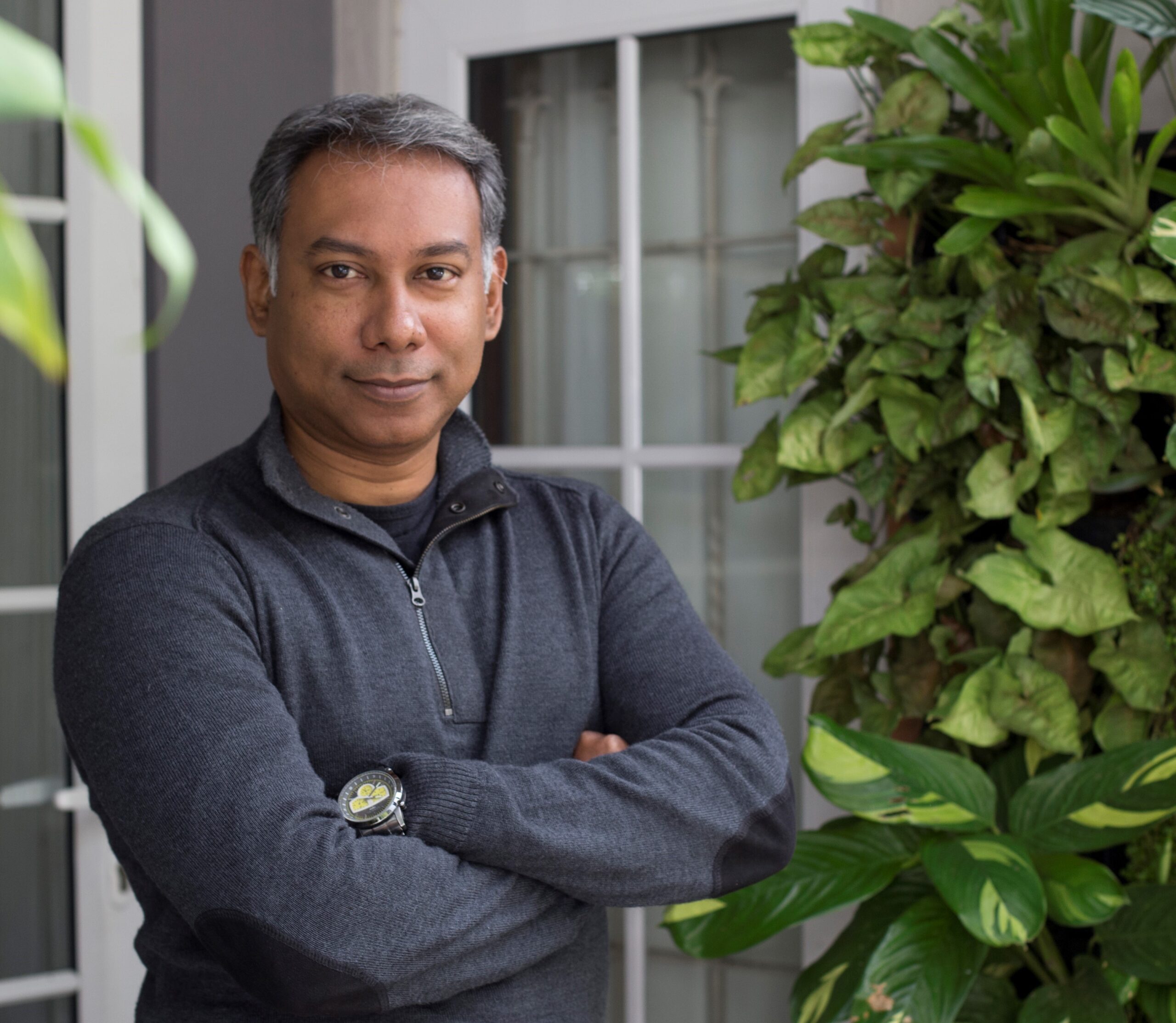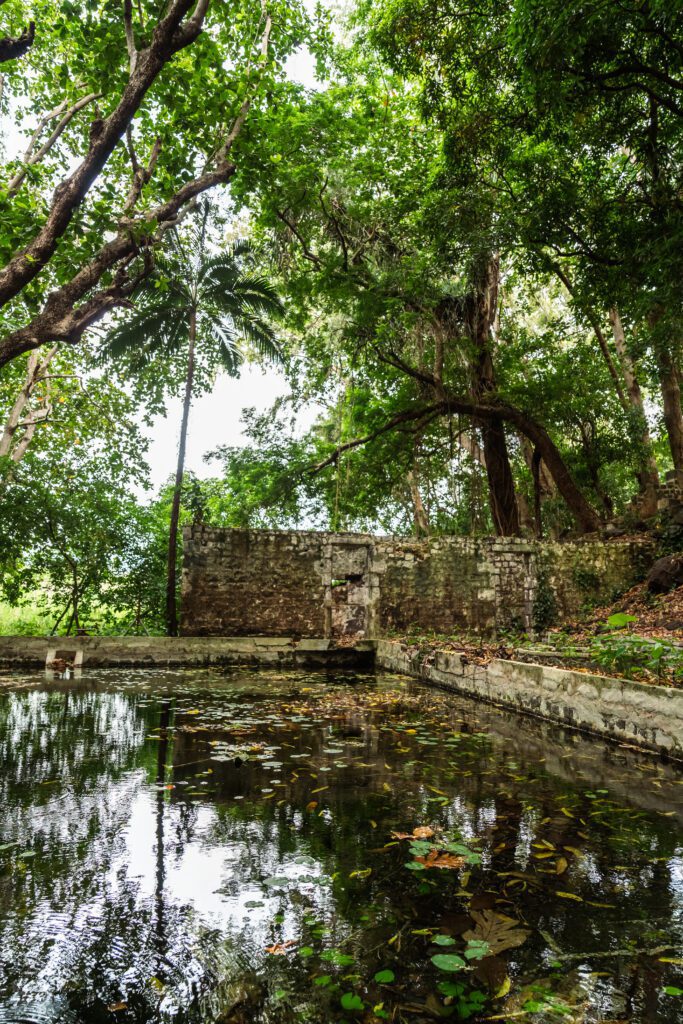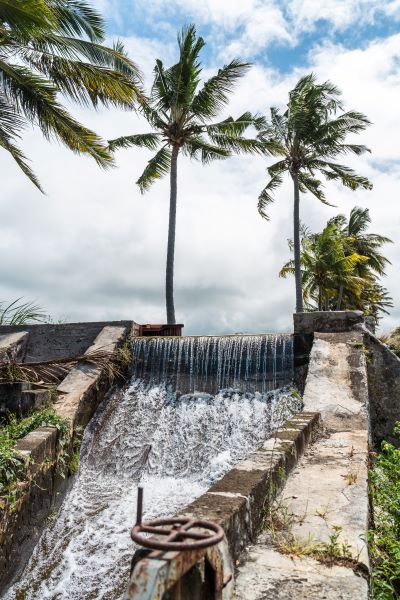
Ashvin Mooneeram, Landscape Architect at Anahita Beau Champ;”The landscaping strategy aligns with the general philosophy of the Alteo Group regarding its residential developments: Green Est, Smart Est, Healthi Est”.
Developed under the Smart City initiative, Anahita Beau Champ has a strong rural and authentic identity. The planning and philosophy of this project place people and nature at the forefront of its concerns.
What unique features distinguish Anahita Beau Champ from other development projects?
The Anahita Beau Champ site is remarkable in many ways, chiefly for its stunning location nestled between a lagoon and mountains, adding a great deal of charm. It boasts unique spots such as the Coconut Palm Alley, Spring Park, the Valley, the Shrimp Ponds, and notably the old sugar factory. This factory, with its molasses tanks and other stone buildings, lends an authentic and historical touch to the site, enhanced by the presence of trees dating back centuries.

How have you showcased the heritage of the site?
Historical elements of the site were integrated to highlight their value and enrich the outdoor spaces, for example, drawing inspiration from the ruins to design the communal pool for the apartments. Irrigation canals have been used to mark transitions between spaces, and significant level changes and existing walls utilised to create an amphitheatre connecting the Coconut Palm Alley with the Valley.



What was the approach to the landscaping?
In designing the landscape of Anahita Beau Champ, efforts were made to preserve the site’s rural character. The idea was to reintroduce species found in coastal villages like flamboyant trees and banyans, creating a very natural and local landscape. Roads and verges, as well as green spaces, are designed to be organically filled and generously planted to delineate public and private spaces, ensuring maximum privacy for residents. The project also aims to add an ecological and educational dimension by selecting vegetation that adapts well to Anahita’s climate and requires minimal maintenance. Inspired by the Japanese concept of Tiny Forests, indigenous forests and ecological corridors were created, applying the principles of productive landscapes. Additionally, the management of runoff water includes creating retention basins in green spaces to capture water for irrigation. The lush vegetation along the roads and in green spaces will significantly contribute to the village’s beauty and identity, as well as carbon sequestration and the creation of a microclimate.
Cette publication est aussi disponible en :
 Français
Français

